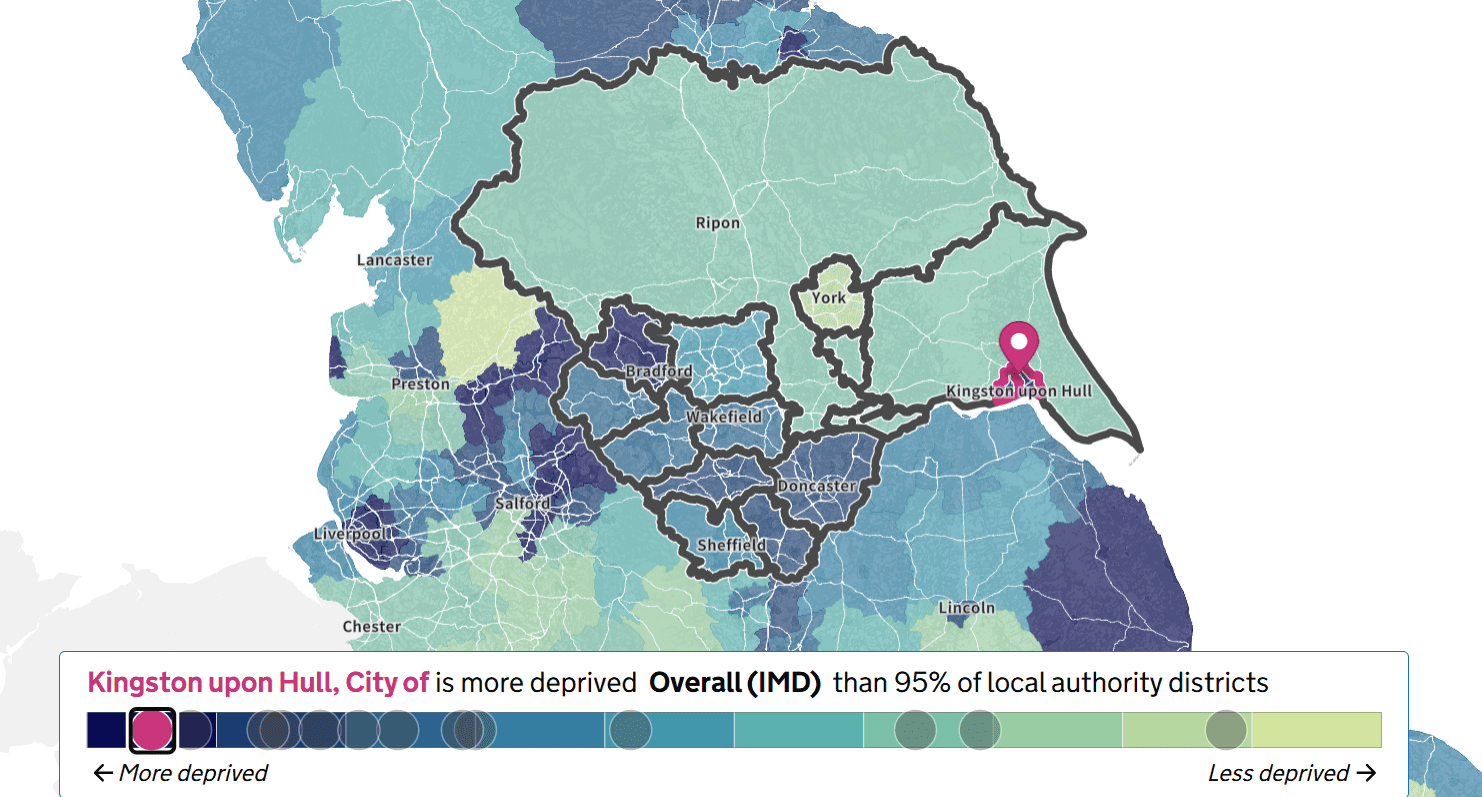Several cities in Yorkshire have some of the highest levels of deprivation in England, according to new government figures.
The Ministry of Housing, Communities and Local Government released its Index of Multiple Deprivation today, which looks at living conditions across local government areas.
Hull is the 4th-most deprived local authority in England, with 41.7% of its neighbourhoods in the most deprived category.
The city also appeared in the 20-most deprived areas across both the proportions of children and older people living in income deprivation, as well as the proportion of income and employment deprivation.
Overall, Hull is more deprived than 95% of other local authority districts.

Today’s report updates previous data released in 2019.
65% of local authorities contain at least one highly deprived neighbourhood, up from 61% in 2019.
However, Hull’s proportion of Lower-layer Super Output Areas (LSOAs) in the most deprived 10% of areas nationally has decreased by 3.6% since 2019.
Other parts of Yorkshire also scored poorly on the list.
An area of Rotherham’s Eastwood neighbourhood was ranked as the 10th-most deprived LSOA in England.
Bradford was the 11th-most deprived local authority, with 37% of its neighbourhoods being highly deprived.
The city is more deprived than 92% of other authorities.
The average level of deprivation across England is 10%.
Middlesbrough topped the list – half of its neighbourhoods were calculated to be highly deprived.
The parameters aren’t applied universally – not everyone living within a highly deprived neighbourhood will be struggling, nor will all those in a less deprived area be well off.
The department used a number of weighted metrics to determine a neighbourhood’s level of deprivation, including income, crime and barriers to housing.
They are then assessed as more or less deprived compared to other neighbourhoods. The Index of Multiple Deprivation ranks all of England’s 33,755 neighbourhoods, each with an average of 1,500 people, by their deprivation score.

